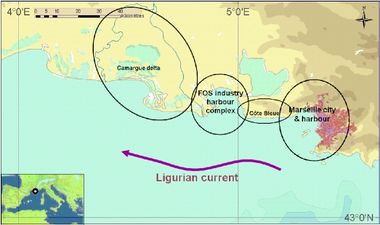Difference between revisions of "Bouches du Rhône"
| Line 12: | Line 12: | ||
[[ICZM_Process_diagram/Establishment|Establishment]] | [[ICZM_Process_diagram/Establishment|Establishment]] | ||
| − | |||
| − | |||
| − | |||
| Line 65: | Line 62: | ||
<u>'''PEGASO tools developed and used'''</u> | <u>'''PEGASO tools developed and used'''</u> | ||
| − | indicators | + | indicators-LEAC-participation |
<u>'''Other tools applied'''</u> | <u>'''Other tools applied'''</u> | ||
| − | + | Socio-economic valuation. | |
<u>'''Training needs'''</u> | <u>'''Training needs'''</u> | ||
Revision as of 14:09, 19 July 2012
CASE description
The Coast of the Bouches du Rhone (120 km) is characterised by calanques (rocky shore), urban, industrial zone, delta, sandy beaches. In the dyked area of the Camargue, the sea has gained the upper hand, in part because modification in the hydrological regime and because incursions by the sea are increasing (due to subsidence and the rising level of the Mediterranean).
ICZM phase
Main coastal issues
Conflicting uses among:
- port area and wetlands;
- protected areas and recreational activities;
- urbanisation and wetlands;
- pollution caused by industries, urban waste, agriculture.
Relation between the Coastal issue and the ICZM protocol principles and articles
The CASES Bouches du Rhône will concentrate on three articles of the protocol to respond to the coastal issues identified in the territorial diagnostic. Article 7: Coordination Provide an opportunity for coordination through appropriate bodies in order to avoid sectoral approaches and facilitate comprehensive approaches. Article 14: Participation Contribute to efficient governance by ensuring appropriate involvement in the phases of the project and the development of tools. Article 16: Monitoring and observation mechanisms and networks Contribute to the use and strengthening existing mechanisms for monitoring and observation (through indicator development and sharing, LEAC, and economic valuation).
Relevance of the coastal issue
Objectives
To implement and test tools that can help decision makers and stakeholders to:
- share a common view of the dynamics and the possible futures of this complex territory where multiple anthropogenic pressures are exerted.
- take appropriate measures to preserve coastal ecosystem services.
- manage interactions between coastal conflicting usages.
End Products
Demonstration of selected tools/methods (economic assessment and LEAC for BdR) in the CASE
PEGASO tools developed and used
indicators-LEAC-participation
Other tools applied
Socio-economic valuation.
Training needs
LEAC - Socio-economic Assessment
CASE Responsibles
Jean-François Cadiou - Ifremer - email: Jean.Francois.Cadiou@ifremer.fr
Lisa Ernoul - Tour du Valat - email: ernoul@tourduvalat.org
Elaboration: Stefano Soriani, Fabrizia Buono, Monica Camuffo, Marco Tonino, University Ca’ Foscari of Venice.


